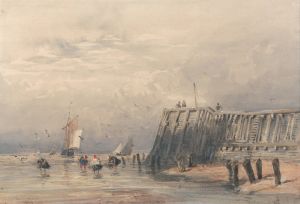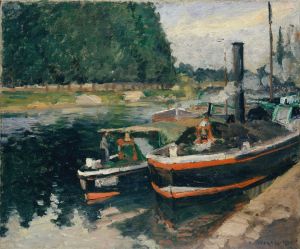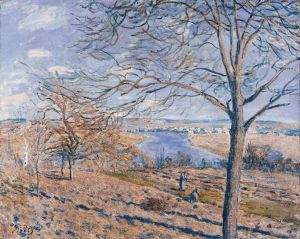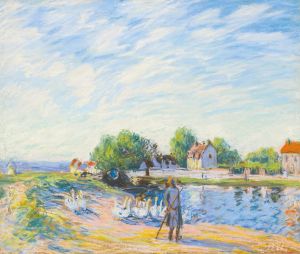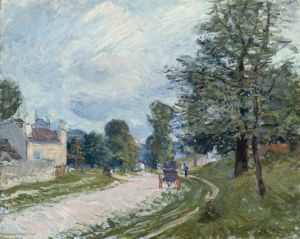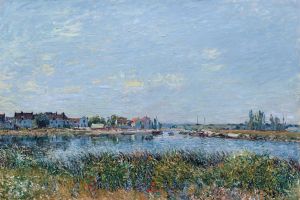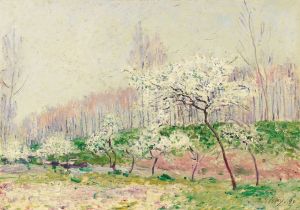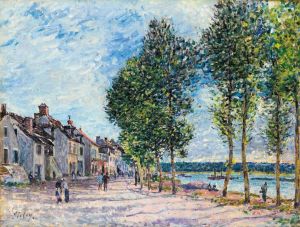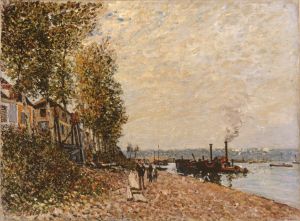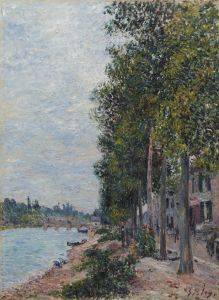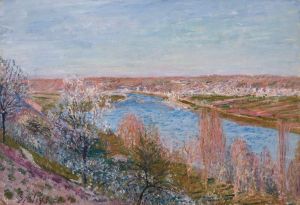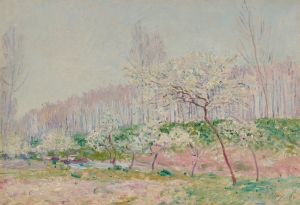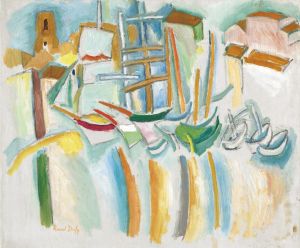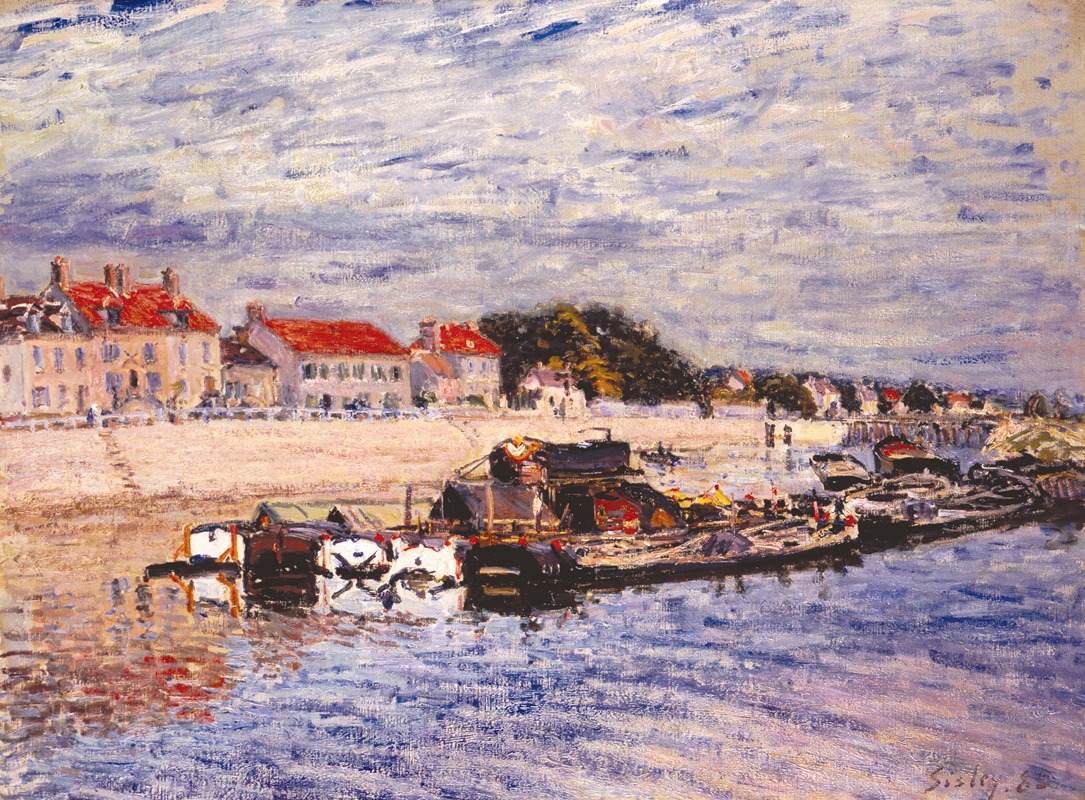
Barges on the Loing at Saint-Mammès
A hand-painted replica of Alfred Sisley’s masterpiece Barges on the Loing at Saint-Mammès, meticulously crafted by professional artists to capture the true essence of the original. Each piece is created with museum-quality canvas and rare mineral pigments, carefully painted by experienced artists with delicate brushstrokes and rich, layered colors to perfectly recreate the texture of the original artwork. Unlike machine-printed reproductions, this hand-painted version brings the painting to life, infused with the artist’s emotions and skill in every stroke. Whether for personal collection or home decoration, it instantly elevates the artistic atmosphere of any space.
"Barges on the Loing at Saint-Mammès" is an oil painting by the renowned Impressionist artist Alfred Sisley. Created in 1885, this work exemplifies Sisley's dedication to capturing the serene and transient beauty of the French landscape. Sisley, a British-born artist who spent most of his life in France, is celebrated for his landscape paintings that often depict rivers, skies, and the interplay of light and shadow.
The painting portrays a tranquil scene along the Loing River at Saint-Mammès, a small commune located at the confluence of the Seine and Loing rivers in the Île-de-France region. This area was a frequent subject for Sisley, who was captivated by its picturesque charm and the dynamic life along its waterways. The painting features a series of barges moored along the riverbank, with the calm water reflecting the sky and surrounding landscape. The composition is characterized by its horizontal format, which emphasizes the expansive sky and the gentle flow of the river.
Sisley's use of color and light in "Barges on the Loing at Saint-Mammès" is particularly noteworthy. The palette is dominated by soft blues, greens, and earthy tones, which convey a sense of tranquility and harmony. The brushwork is loose and fluid, typical of the Impressionist style, allowing the viewer to experience the scene as a fleeting moment captured in time. The play of light on the water and the subtle gradations of color in the sky demonstrate Sisley's mastery in depicting natural light and atmospheric effects.
Alfred Sisley was a key figure in the Impressionist movement, although he never achieved the same level of fame as some of his contemporaries, such as Claude Monet and Pierre-Auguste Renoir. Despite this, his work is highly regarded for its lyrical quality and its faithful representation of the French countryside. Sisley's dedication to plein air painting, or painting outdoors, allowed him to observe and capture the changing effects of light and weather on the landscape, a hallmark of the Impressionist approach.
"Barges on the Loing at Saint-Mammès" reflects Sisley's interest in the everyday life and labor associated with the river. The presence of the barges suggests a narrative of commerce and transportation, integral aspects of life in the region during the late 19th century. However, Sisley's focus remains on the natural environment, with human activity subtly integrated into the broader landscape.
Today, "Barges on the Loing at Saint-Mammès" is appreciated for its serene beauty and its contribution to the Impressionist canon. The painting is housed in various collections, and its exact location may vary as it is sometimes featured in exhibitions dedicated to Sisley or Impressionist art. Sisley's work continues to be studied and admired for its technical skill and its ability to evoke the peacefulness and beauty of rural France.
In summary, "Barges on the Loing at Saint-Mammès" is a testament to Alfred Sisley's artistic vision and his ability to capture the essence of the natural world. Through his use of color, light, and composition, Sisley invites viewers to experience the quiet elegance of the French landscape, as seen through the eyes of one of Impressionism's most dedicated practitioners.





